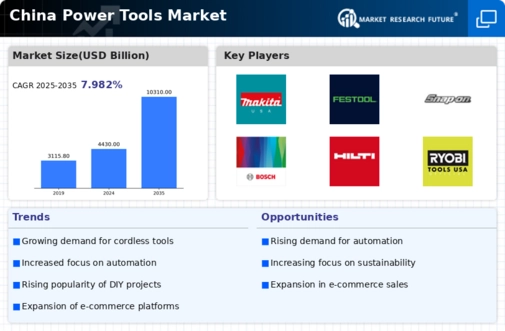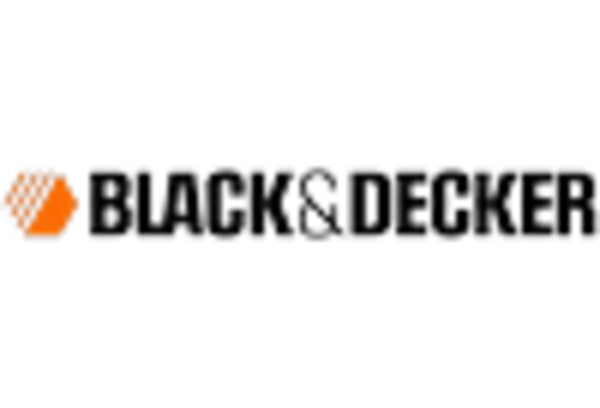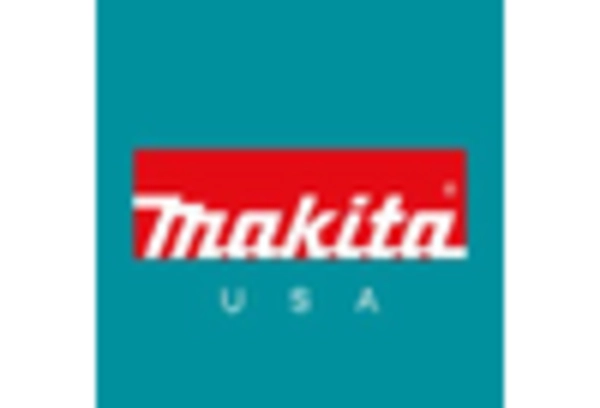Growing DIY Culture
The power tools market in China is witnessing a transformation driven by the growing DIY culture among consumers. As more individuals engage in home improvement and renovation projects, the demand for power tools is on the rise. This trend is supported by a shift in consumer behavior, where people are increasingly inclined to undertake DIY tasks rather than hiring professionals. Market data indicates that the DIY segment is expected to account for approximately 30% of total power tools sales in the coming years. Retailers are responding by expanding their product offerings to cater to this emerging consumer base. The power tools market industry is thus adapting to meet the needs of DIY enthusiasts, providing a diverse range of tools that emphasize ease of use and affordability.
Rising E-commerce Penetration
The power tools market in China is significantly influenced by the rising penetration of e-commerce platforms. With the increasing popularity of online shopping, consumers are more inclined to purchase power tools through digital channels. E-commerce sales in the power tools sector are projected to grow by 20% annually, driven by the convenience and accessibility of online platforms. Retailers are leveraging this trend by enhancing their online presence and offering competitive pricing. This shift not only expands the reach of power tools but also allows consumers to access a wider variety of products. The power tools market industry is thus adapting to this digital transformation, ensuring that both professional tradespeople and DIY enthusiasts can easily find and purchase the tools they need.
Surge in Construction Activities
The power tools market in China experiences a notable boost due to the surge in construction activities across urban and rural areas. Government initiatives aimed at infrastructure development, such as the New Urbanization Plan, have led to increased investments in construction projects. This trend is reflected in the construction sector's growth rate, which is projected to reach 7.5% annually. Consequently, the demand for power tools, essential for construction tasks, is expected to rise significantly. As construction companies seek to enhance productivity and efficiency, they are likely to invest in advanced power tools, thereby driving the market forward. The power tools market industry is poised to benefit from this construction boom, as contractors and builders increasingly rely on high-quality tools to meet project demands.
Technological Advancements in Tool Design
Technological advancements play a crucial role in shaping the power tools market in China. Innovations in tool design, such as improved battery technology and enhanced motor efficiency, are driving the development of more powerful and versatile tools. The introduction of brushless motors, for instance, has led to tools that offer longer run times and reduced maintenance needs. Market analysts suggest that these advancements could lead to a 15% increase in tool performance, making them more appealing to both professionals and DIY users. As manufacturers continue to invest in research and development, the power tools market industry is likely to see a proliferation of cutting-edge tools that meet the evolving demands of consumers.
Focus on Sustainability and Eco-Friendly Products
The power tools market in China is increasingly focusing on sustainability and eco-friendly products. As environmental concerns gain prominence, consumers are becoming more conscious of the ecological impact of their purchases. This shift is prompting manufacturers to develop power tools that utilize sustainable materials and energy-efficient technologies. Market data indicates that eco-friendly power tools could capture up to 25% of the market share within the next few years. Companies that prioritize sustainability are likely to gain a competitive edge, appealing to environmentally conscious consumers. The power tools market industry is thus evolving to incorporate green practices, aligning with broader trends towards sustainability in manufacturing and consumer behavior.

















Leave a Comment